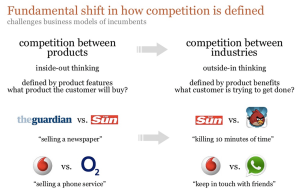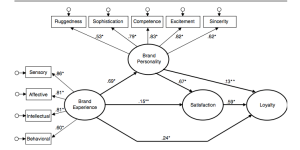For the past hundred years of marketing that’s what we’ve been doing; we’re looking backwards, trying to piece together an incomplete view of how markets and consumers behave to better understand and better serve their needs. We use a plethora of discrete and disconnected data points, from surveys and focus groups to demographics and buying patterns to understand consumer behavior. But, for the most part, we’re still guessing.
That guessing game is evident in the difficulty large incumbent organizations have in innovating. After all, if incumbents knew their markets well enough they would always have the upper hand. Yet, we know that’s not the way innovation works. If it did, Sony would own the iPod, and Motorola the iPhone. But innovation is about to change from a guessing game to a science.
Are you a Loyal Brand?
Digital Anthropology is the science of filling in the blanks by using our digital footprints to chart the most detailed, intimate, and real-time aspects of our behaviors.
Companies who are doing this well aren’t limited to the tech social media giants such as Facebook and Google, but also include companies such as Lowes, GM (through OnStar), Apple through its iPhone, Bloomingdale’s and Brookstone.
The end game for these companies is to create a “Loyal Brand” that understands you in ways that you do not even fully understand yourself–allowing them to predict your buying behaviors and personal interests with uncanny precision.
From understanding consumer to understanding the relationship
I think brands should always be trying to answer this question: “what service is the user/consumer hiring my company/brand for?” This is a significant jump from the belief that “the user/consumer buys our products or services because we have the best or the most value for the money” to “ I serve my consumers for the purpose they hired me for.”
So, as Vision Mobile mentions in the picture below:
We see that competition barriers or industries are cannibalized because of the new relationship consumers have with technology. In our times, technology and the relationship we have with it is 100% redefined and re-established.
We hire a brand for completely different reasons most of the time–not always for reasons relevant to specs or impressive numbers, but also based on the brand personality and how well it connects to our beliefs and values, and fulfills our expectations.
So to answer the question “what service is the user/consumer hiring my company/brand for,” you need not numbers or specs but logical answers to each element of the brand experience, and to know how this fulfills the consumer’s expectations and needs.
Moreover, the brand area blurring is followed by the typical brand touch-points blurring. Mobility redefines the relationship people have with technology and how they experience brands–but it also reshapes their demands, as well as the reasons which drive them to select a brand for the service they need, and for the results they want.






